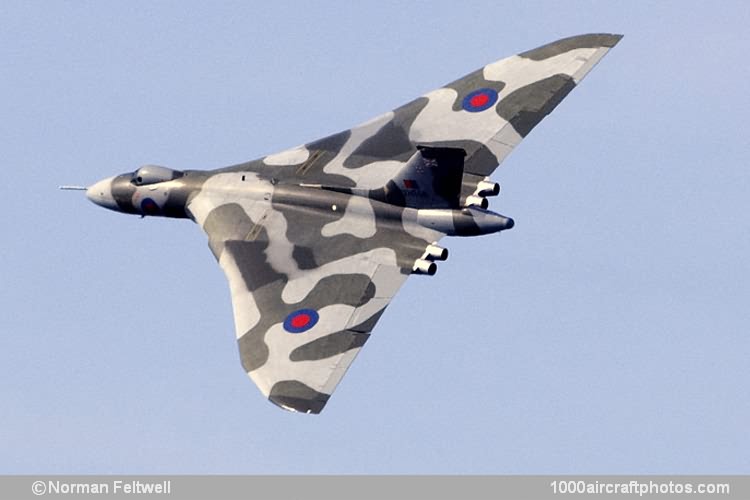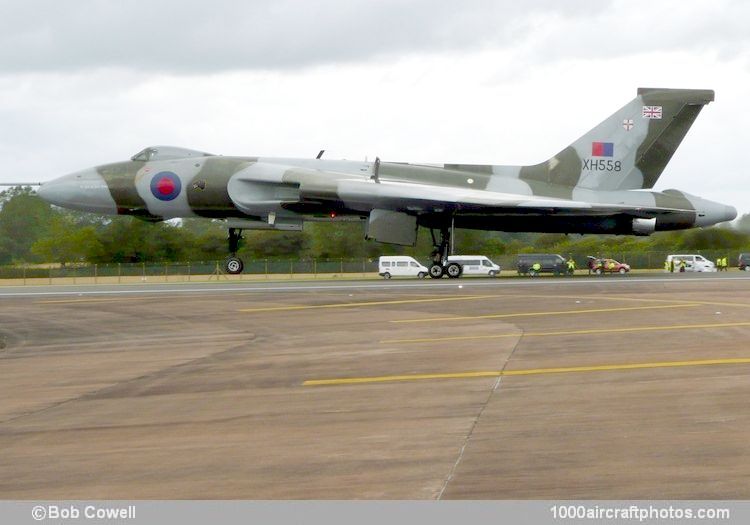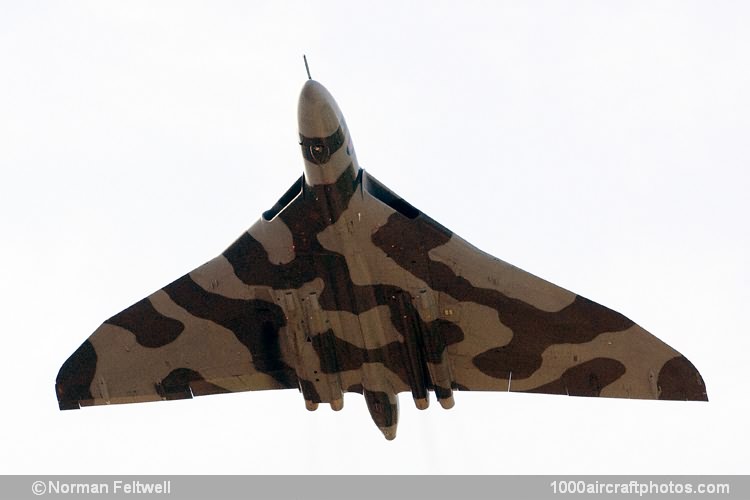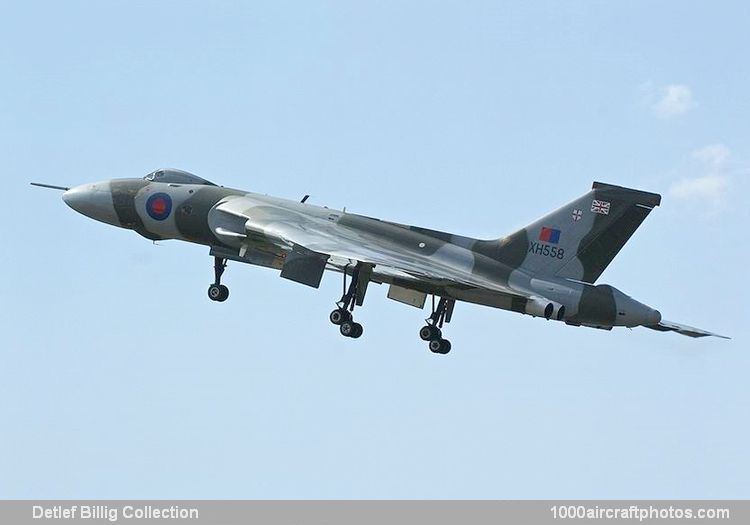06/30/2011. Remarks by Johan Visschedijk: "The advent of the powerful 16,000 lb (7,257 kg) st Bristol Olympus turbojet (first flown in Vulcan B.Mk.1 serial XA891) made possible the much more advanced Vulcan B.Mk.2 with increased span and intended as a launching platform for the Avro Blue Steel 'stand-off' bomb or the Douglas Skybolt missile. Best use of the increased power was made by reducing the thickness/chord ratio of the wing extremities and further increasing the compound taper of the leading edge. Buffeting limitations were removed by fitting elevons in place of conventional ailerons and elevators.
A Rover auxiliary power plant made the Vulcan B.Mk.2 independent of outside services and the effective range was extended by providing for air refueling from Vickers Valiant tankers. The second prototype VX777 became the Vulcan B.Mk.2 aerodynamic test vehicle and first flew with the new wing and toed-out jet pipes for the later Olympus engines on August 31, 1957. Powered by four 17,000 lb (7,711 kg) st Olympus 201 engines, the first production Vulcan B.Mk.2 XH533 flew on August 30, 1958 and deliveries began in 1960. The power of the engines was gradually increased until the 20,000 lb (9,072 kg) st Olympus 301 in the Vulcan B.Mk.2A raised the top speed and operating altitude to the aerodynamic limits of the airframe.
G-VLCN was the twelfth Vulcan B.Mk.2 produced, and serialed XH558 it was delivered to No. 230 Operational Conversion Unit at RAF Waddington on July 1, 1960. In 1973 it was fitted with electric, optical and other sensors, and became a Vulcan B.Mk.2 (MRR) Maritime Radar Reconnaissance aircraft. It was converted to a Vulcan K.Mk.2 air-to-air refueling tanker in 1982, but was returned to a standard Vulcan B.Mk.2 in 1985."



